Top Rankings
Randolph Academy Union Free School District ranks among the top 20% of public school district in New York for:
Category
Attribute
Student Attention
Lowest student:teacher ratio (Top 1%)
For the 2025 school year, there are 2 public elementary schools serving 165 students in Randolph Academy Union Free School District. This district's average elementary testing ranking is 1/10, which is in the bottom 50% of public elementary schools in New York.
ÎÛÎÛÂþ» Elementary Schools in Randolph Academy Union Free School District have an average math proficiency score of 20% (versus the New York public elementary school average of 41%), and reading proficiency score of 20% (versus the 48% statewide average).
Minority enrollment is 35% of the student body (majority Hispanic), which is less than the New York public elementary school average of 61% (majority Hispanic).
Overview
This School District
This State (NY)
# Schools
2 Schools
3,702 Schools
# Students
165 Students
1,750,092 Students
# Teachers
27 Teachers
153,310 Teachers
Student : Teacher Ratio
6:1
6:1
District Rank
Randolph Academy Union Free School District, which is ranked #990 of all 1,015 school districts in New York (based off of combined math and reading proficiency testing data) for the 2021-2022 school year.
Overall District Rank
#999 out of 1020 school districts
(Bottom 50%)
(Bottom 50%)
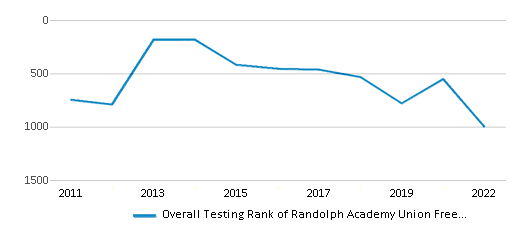
Math Test Scores (% Proficient)
≤20%
46%
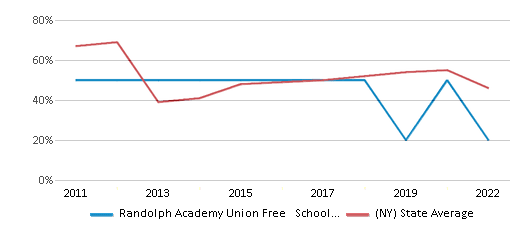
Reading/Language Arts Test Scores (% Proficient)
≤20%
49%

Science Test Scores (% Proficient)
<50%
78%
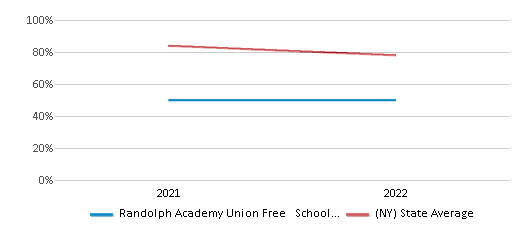
Students by Ethnicity:
Diversity Score
0.54
0.73
# American Indian Students
4 Students
14,013 Students
% American Indian Students
2%
1%
# Asian Students
n/a
175,821 Students
% Asian Students
n/a
10%
# Hispanic Students
24 Students
531,348 Students
% Hispanic Students
15%
30%
# Black Students
14 Students
278,768 Students
% Black Students
9%
16%
# White Students
108 Students
682,836 Students
% White Students
65%
39%
# Hawaiian Students
n/a
3,810 Students
% Hawaiian Students
n/a
n/a
# Two or more races Students
15 Students
63,556 Students
% of Two or more races Students
9%
4%
Students by Grade:
# Students in PK Grade:
-
60,112
# Students in K Grade:
1
169,096
# Students in 1st Grade:
2
177,074
# Students in 2nd Grade:
1
181,096
# Students in 3rd Grade:
6
177,104
# Students in 4th Grade:
9
180,516
# Students in 5th Grade:
7
181,163
# Students in 6th Grade:
10
184,038
# Students in 7th Grade:
19
161,270
# Students in 8th Grade:
10
161,773
# Students in 9th Grade:
27
24,993
# Students in 10th Grade:
27
23,859
# Students in 11th Grade:
28
21,596
# Students in 12th Grade:
15
21,027
# Ungraded Students:
3
25,375
District Revenue and Spending
The revenue/student of $55,218 is higher than the state median of $31,307. The school district revenue/student has declined by 6% over four school years.
The school district's spending/student of $58,964 is higher than the state median of $32,183. The school district spending/student has declined by 6% over four school years.
Total Revenue
$9 MM
$78,541 MM
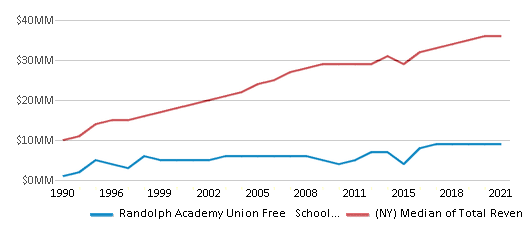
Spending
$10 MM
$80,737 MM
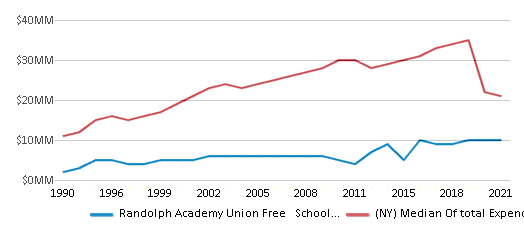
Revenue / Student
$55,218
$31,307
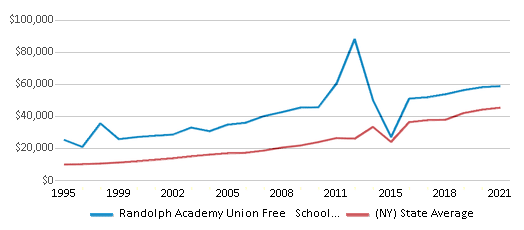
Spending / Student
$58,964
$32,183
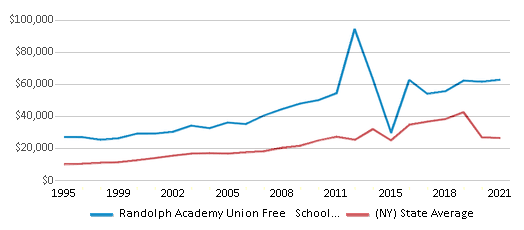
Best Randolph Academy Union Free School District ÎÛÎÛÂþ» Elementary Schools (2025)
School
(Math and Reading Proficiency)
(Math and Reading Proficiency)
Location
Grades
Students
Rank: #11.
Randolph Academy
(Math: ≤20% | Reading: ≤20%)
Rank:
Rank:
1/
Bottom 50%10
336 Main St
Randolph, NY 14772
(716) 358-6866
Randolph, NY 14772
(716) 358-6866
Grades: K-12
| 83 students
Rank: n/an/a
4655 Logans Ln
Hamburg, NY 14075
(716) 648-1930
Hamburg, NY 14075
(716) 648-1930
Grades: K-12
| 82 students
Recent Articles

Year-Round Or Traditional Schedule?
Which is more appropriate for your child? A year-round attendance schedule or traditional schedule? We look at the pros and cons.

Why You Should Encourage Your Child to Join a Sports Team
Participating in team sports has a great many benefits for children, there is no doubt. In this article you will learn what those benefits are.

White Students are Now the Minority in U.S. ÎÛÎÛÂþ» Schools
Increasing birth rates among immigrant families from Asia and Central and South America, combined with lower birth rates among white families, means that for the first time in history, public school students in the United States are majority-minority. This shift in demographics poses difficulties for schools as they work to accommodate children of varying language abilities and socio-economic backgrounds.





